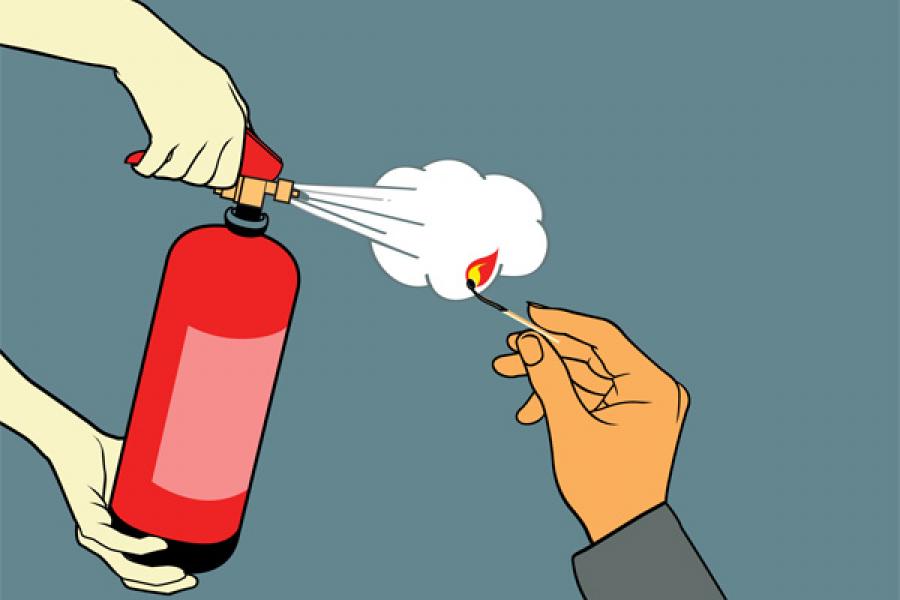
Dreading Risk in the Stock Market
Over-reaction is dangerous in arriving at investment decisions
The overwhelming majority of investors tend to formulate investment strategy by naively extrapolating recent trends. Second, they tend to be overconfident in their ability to predict the immediate future accurately. Finally, their confidence intervals are skewed, which means their best guesses are not evenly spaced between their high and low estimates. Why does this happen? In effect, individuals are most influenced or tend to ‘anchor’ their predictions on just how salient they believe recent history is. Nobel Prize winner Daniel Kahneman suggested that we tend to judge the probability of an event by the ease with which we can call it to mind. The more vivid our memory of something similar in the past, the more probable it will seem to happen again. Remember 2008 — AIG, Lehman Brothers, Bear Stearns.
Paul Slovic, an eminent psychologist has an explanation that is based on our intuitive sense of risk being driven by two factors — dread and knowability. His conclusion: These two factors ‘infuse risk with feelings’. Dread is really a function of how dramatic, controllable or potentially catastrophic a risk appears to be. The knowability of a risk depends on how immediate, specific or certain the consequences appear to be.
Therefore, our perceptions are distorted such that we underestimate the probability and severity of common risks such as inflation. On the flip side, less comprehensible risks that we have never personally experienced seem potentially lethal. As Jason Zweig put it, “We see the world through warped binoculars that not only magnify whatever is remote, but shrink whatever is near.” So, blinking in the face of risk might well be natural, yet the over-reaction is incredibly dangerous in arriving at investment decisions.
Among the myriad risks currently gnawing away at sentiment, which ones are likely to do maximum damage? The prospect of either Spain or Italy requiring a bail-out could well bring financial Armageddon a whole lot closer to home. A haphazard response by a government that has clearly lost its way could lead to political chaos and international investors taking flight. Understandably, the Reserve Bank of India governor is right to treat inflation as his top priority. However, his unequivocal desire to maintain monetary discipline even at the expense of slower growth, has sent shivers down the spine of most CEOs. The financial media seems to revel in highlighting the current woes of the stock market with laser-like precision — the interminably long list of new 52 week lows, faltering corporate earnings, the soaring price of gold and the incredibly muddled response of policymakers around the globe. So, does financial holocaust beckon just round the corner or are there signs that the deathly pall of gloom might lift within the next two or three quarters?
Two exceptionally positive developments have taken place by stealth. First, the price of crude is headed south, thanks to the forecast that the US is about to succumb to a double dip recession. Second, valuations are now far more reasonable at just under 14 times current year earnings for the indices. Despite the relentless shrieks of caveat emptor from the learned talking heads on television, rarely have investors been better placed to consider investing in equities at any time in the past couple of years compared to the present moment! A phased entry at the present juncture coupled with an appetite to escalate the extent of financial commitment should the market decline sharply, appears to be not only rational, but also bereft of any prescient instincts aimed at timing the market.
Three banks that share a number of common characteristics — resilient asset quality, cost advantages related to constant improvements in operating efficiency and a superior liability profile, a commendable balance between seeking growth and capital adequacy and most importantly, a proactive and seasoned senior management team — are compelling buys at their currently depressed valuation. Most impressively, each of the banks — Punjab National Bank (993), Bank of Baroda (744) and Andhra Bank (121) — have delivered return on assets in excess of 1 percent for the past decade and offer above market dividend yields. eClerx Services (747) merits serious attention given its incredibly loyal customer base, pristine balance sheet, proven ability to maintain sales growth in excess of 20 percent and potential to benefit meaningfully should the rupee strengthen relative to the dollar. The company is a bargain at just over 14 times current earnings considering its remarkable earning power (50 percent+ ROE in each of the past five years) and juicy dividend yield of 3 percent!
Plato understood the essence of fear when he said, “We can easily forgive the child who is afraid of the dark; the real tragedy of life is when men are afraid of the light.”
Disclosure: This column is neither an offer to sell nor solicitation to buy any of the securities mentioned herein. The author frequently invests in the shares discussed by him.
(This story appears in the 09 September, 2011 issue of Forbes India. To visit our Archives, click here.)
-
 Nikhil
NikhilEnjoy reading your articles. Another nice read. Thank you.
on Sep 6, 2011















